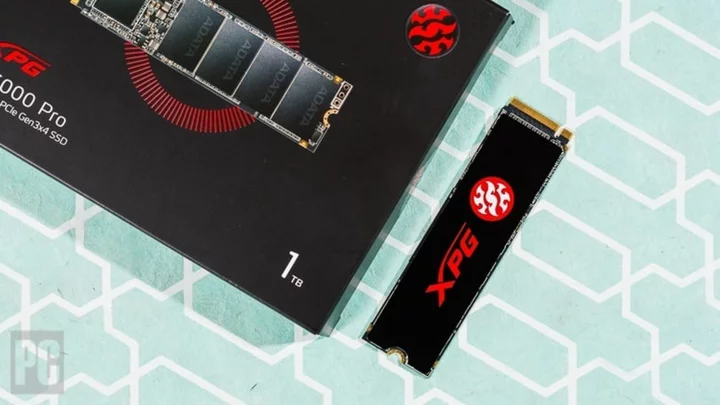The countless dangers of both indoor and outdoor tanning can’t be ignored. The Skin Cancer Foundation reports that just one indoor tanning session before age 35 increases the risk of developing life-threatening melanoma (a type of skin cancer that can spread to other areas of the body) by 75%. Sunbathing outside is no better. Cancer Research UK reports that getting sunburned just once every two years may triple your risk of melanoma skin cancer. Considering the grisly statistics, many of us have come to the realization that the only healthy tan is a fake one — but as a new obsession with certain tanning enhancers proves, not all artificial tanning tactics are made alike.
TikTok in particular is awash with young women using a nasal spray that contains Melanotan II, an analogue of an artificial hormone that was initially developed in the 1980s and said to help treat skin conditions such as vitiligo. Available as an injection and, more recently, as a spray to be inhaled and delivered via the nose’s mucus membrane, today it is used (against better judgement) to stimulate the production of melanin within the skin to produce a deeper and faster tan.
“Tanning nasal sprays contain a manmade molecule that mimics a naturally occurring hormone called alpha-MSH [alpha-melanocyte-stimulating hormone],” says Dr. Derrick Phillips, consultant dermatologist and fellow of the Royal College of Physicians. “This stimulates increased pigment production following UV exposure.” Its predecessor, Melanotan I, required more frequent doses to achieve increased pigmentation. While Melanotan II enables users to achieve a darker tan in fewer doses, it has been found to cause more side effects such as nausea and drowsiness.
The younger generation has caught on fast. “Come with me to get a sunbed,” says a TikToker as she invites her thousands of followers along to watch her “tanning routine.” Two spritzes of a tan-enhancing nasal spray up each nostril, a few ingestible tan-boosting drops placed under the tongue, a liberal head-to-toe application of tan accelerator lotion and 12 minutes underneath intense UV exposure in a tanning salon later, she emerges with skin dramatically bronzer than before.
Part of me felt I should be okay with my skin tone and that, in going to such extremes to change it, I was failing myself in some way.
As the video makes clear, using Melanotan II is as easy as using Flonase during allergy season — but medicine it is not. In a 2022 response to a Freedom of Information request, the UK government’s Medicines and Healthcare products Regulatory Agency (MHRA) confirmed that products containing Melanotan II are unlicensed; as such, the safety, quality, and effectiveness of the product have not been proven.
An internet search for information on who produces Melanotan II reveals hundreds of potential manufacturers and suppliers, and it is difficult to attribute the product to one distributor. I reached out to a handful for comment but I have yet to receive a response. Registered toxicologist Rani Ghosh told R29 that it would be hard to find manufacturers publicly disclosing Melanotan II’s use or sale as a tanning product and advertising it as such to the general public, as this would be illegal. “The chemical vendors that make and sell [Melanotan II] are dotted about globally,” said Ghosh, “but their end use and intention is unlikely for the cosmetic or tanning market.”
I did manage to get hold of someone at CLINUVEL, the pharmaceutical company which acquired the licence to the original alpha-melanocyte-stimulating hormone drug (which it refers to as afamelanotide). CLINUVEL does not create Melanotan II but manufactures afamelanotide under the name SCENESSE® for the approved use of preventing phototoxicity in adults with the metabolic disorder erythropoietic protoporphyria.
In an email, CLINUVEL responded: “Products offered online as ‘melanotans’ are in no way related to CLINUVEL or its development program for afamelanotide. ‘Melanotan 2’ (also sold as ‘tanning jabs’, ‘jabbatan’ or ‘melanotan ii’) is a counterfeit chemical of unknown origin which has never been formally tested in clinical trials and thus is sold, unlicensed, online. No product offered as ‘melanotan’ has been approved or regulated in any jurisdiction globally. Due to their unknown manufacture and ingredients, the ‘melanotan’ chemicals may pose a serious threat to human health. It has been shown through various chemical analyses that the chemical substances offered online bear no resemblance to the molecular structure of afamelanotide.”
The sale of Melanotan II is illegal in the UK and in all 50 US states but a quick online search uncovers various websites selling Melanotan II injections and nasal sprays for as little as £18 (or $39 in the US). This is how hundreds of social media influencers have come to document their experiences of using the drug to achieve an intense tan. What they aren’t telling you — and perhaps aren’t even aware of themselves — is that the drug is said to carry some serious side effects. Studies have linked the hormone in Melanotan to changes in existing moles and the development of new ones, urological issues like erectile dysfunction, and melanoma skin cancer.
For 20% of Gen Z adults, however, getting a tan is more important than preventing skin cancer, according to the American Academy of Dermatology Association. I wish I were in a position to judge but I understand the desire to be tanned all too well. I grew up in Britney Spears’ and Christina Aguilera’s tanned heyday and I hated my natural, almost translucent skin. I tried tanning beds (and got burned), tanning oils (and got burned), and sickly sweet fake tan that turned my skin a shade more radioactive than sun-kissed. Around 2008, I had had enough. I can’t remember how I discovered Melanotan II injections, but I found it surprisingly easy to bury any concerns I had about the drug in order to buy it from a suspicious website and have it shipped to the UK all the way from Australia.
The bruises that littered my stomach became little markers of my shame. In the short time I used the hormone, I experienced overwhelming waves of nausea, flushing, and dizziness.
These days, I consider myself a science-minded beauty journalist unafraid of interrogating iffy claims put forward by products, brands, and personalities. But back then I was so consumed by the idea of a tan, I would have tried just about anything — and I did. The needle I used to inject the Melanotan II into my stomach nightly was substantial. I would spend the entire day fearing the injection and have to take a few steadying breaths to calm myself down before I could administer it. The drug was clear and innocuous-looking in its glass vial but the bruises that littered my stomach became little markers of my shame. In the short time I used the hormone, I experienced overwhelming waves of nausea, flushing, and dizziness. In the minutes following the injection I would have to hold myself perfectly still: I often felt so dizzy, I worried I would pass out. Other reported side effects include vomiting, allergic reactions, and a fluctuating libido.
Despite the nausea, the dizziness, the pain, and the shame, I was still desperate for a tan. My skin got fractionally darker but so did my moles. Friends and family questioned my new bronze coloring. I was filled with embarrassment that I had resorted to injections, so I told them it was natural. I don’t think they believed me but admitting the truth made me feel silly and vain. It’s only in the last few years that I’ve told anyone that I used Melanotan II. Part of me felt I should be okay with my skin tone and that, in going to such extremes to change it, I was failing myself in some way. I continued dosing myself every evening until the box of medication was empty. I couldn’t bring myself to buy any more.
Tanning nasal sprays containing Melanotan II may seem less risky by virtue of the less invasive application method, but they’re just as concerning to medical professionals. Dr. Emma Wedgeworth, consultant dermatologist and British Skin Foundation spokesperson, is especially worried about their prevalence among young women. She says she’s asked regularly about them by people who’ve seen them on social media. “I think it’s often hard for people to admit using these products to a medical professional, so it’s difficult to ascertain the extent of usage,” Dr. Wedgeworth says. “What I do know is that we are seeing increased numbers of young people with skin cancers in clinics, and reports in medical journals have highlighted concerns around the use of these products.” She explains that if the skin’s melanin cells are overstimulated — as they can be when using tanning accelerators like nasal sprays — there may be an increased risk of developing melanoma, the most serious form of cancer. As such, the combination of tanning and tanning nasal sprays could significantly raise the risk of skin cancers.
“I think it’s often hard for people to admit using these products to a medical professional, so it’s difficult to ascertain the extent of usage.”
Dr. Emma Wedgeworth, dermatologist and British Skin Foundation spokespersonAlongside injections and nasal sprays, tanning patches that claim to deliver melanin boosters into your bloodstream through the skin are also gaining popularity. Getting to the bottom of the ingredients contained within the patches is no easy task, with most manufacturers advising they simply “increase the level of your natural ability to tan” or “stimulate melanocytes,” with little explanation of how exactly they do this. After a lengthy scroll through what are mostly hard-to-find FAQs, I learned that most tanning patches rely on a combination of hyaluronic acid and the amino acid tyrosine, which helps the body produce pigment for hair and skin. “It’s very difficult to know the exact ingredients in these patches,” Dr. Wedgeworth says. “Some claim they are ‘Melanotan II-free’, while some seem to contain amino acids such as tyrosine, which can help stimulate melanin production.” Either way, she says, there’s no safety data to support tanning patches. Plus, Dr. Wedgeworth adds, “They too encourage UV exposure, which we know can be detrimental for the skin.”
Like my younger self, many current tanning drug users brush off the dangers. I often come across one young TikToker who regularly hits back at her followers when they attempt to warn her of the damage she could be doing by using nasal sprays and patches. She insists she’s aware and simply doesn’t care. Plenty of Melanotan II tanning nasal spray users openly acknowledge that they are increasing their chance of developing skin cancer yet still choose to pursue a tan by any means necessary.
While researching this piece, I reached out to a handful of young women on TikTok, some who openly use tanning nasal sprays and others who have since gone on to develop skin cancer. No one was willing to speak out against the drug. One woman even insisted that doctors are ill informed of the risks. Worryingly, research suggests that misinformation surrounding the supposed “safety” of Melanotan is rife in various online forums despite contributors having no health credentials.
More than a decade after my regretful Melanotan II usage, I have learned to embrace — even love — my pale skin. Of course, I would like to be in the sun with my friends and enjoy the warmth but it’s no hardship to remain in the shade and slather on the SPF 50. My moles are another story: Those that became more pronounced while I was taking the injections are still noticeable years later, as are the moles I developed during that time. I monitor them diligently for changes and have had a couple investigated by my doctor.
If you’re using tanning accelerators, tanning beds, and unprescribed tanning drugs, the best thing you can do to preserve the long-term health of your skin is to stop immediately. But can skin ever recover from unregulated tan enhancers and tanning bed exposure? “While it’s possible to improve the signs of skin aging, there is currently no way to reverse the DNA damage caused by UV radiation,” Dr. Phillips says. “Skin tone and texture can be improved with chemical peels, lasers such as Intense Pulsed Light (IPL) and BroadBand Light (BBL), and peptide-based technologies.” He adds, “You should still see a consultant dermatologist if you notice any dark, irregular-shaped, or changing moles.”
I understand the desire for a sun-kissed glow but if working in the beauty industry has taught me anything, it’s that no tan is worth the potentially life-threatening consequences, especially when the new generation of self-tanning products are so remarkable. As with most things to do with our skin, the benefits of prevention far outweigh the cure. I will now forever be alert to changes in my skin — the signs of lasting damage that those few months of reckless tanning injections in my 20s have caused. Thanks to social media, the lure of a tan can feel irresistible at times but there are just too many question marks around tan boosters to risk the long-term, potentially deadly repercussions.
This story was originally published on Refinery29UK.









